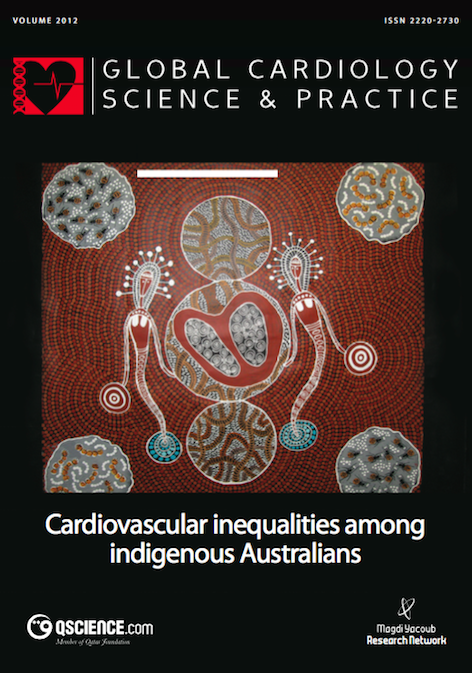Pattern and degree of left ventricular remodeling following a tailored surgical approach for hypertrophic obstructive cardiomyopathy
Abstract
Background: The role of a tailored surgical approach for hypertrophic cardiomyopathy (HCM) on regional ventricular remodelling remains unknown. The aims of this study were to evaluate the pattern, extent and functional impact of regional ventricular remodelling after a tailored surgical approach.
Methods: From 2005 to 2008, 44 patients with obstructive HCM underwent tailored surgical intervention. Of those, 14 were ineligible for cardiac magnetic resonance (CMR) studies. From the remainder, 14 unselected patients (42 ± 12 years) underwent pre- and post-operative CMR studies at a median 12 months post-operatively (range 4–37 months). Regional changes in left ventricular (LV) thickness as well as global LV function following surgery were assessed using CMR Tools (London, UK).
Results: Pre-operative mean echocardiographic septal thickness was 21 ± 4 mm and mean LV outflow gradient was 69 ± 32 mmHg. Following surgery, there was a significant degree of regional regression of LV thickness in all segments of the LV, ranging from 16% in the antero-lateral midventricular segment to 41% in the anterior basal segment. Wall thickening was significantly increased in basal segments but showed no significant change in the midventricular or apical segments. Globally, mean indexed LV mass decreased significantly after surgery (120 ± 29 g/m2 versus 154 ± 36 g/m2; p < 0.001). There was a trend for increased indexed LV end-diastolic volume (70 ± 13 mL versus 65 ± 11 mL; p = 0.16) with a normalization of LV ejection fraction (68 ± 7% versus 75 ± 9%; p < 0.01).
Conclusion: Following a tailored surgical relief of outflow obstruction for HCM, there is a marked regional reverse LV remodelling. These changes could have a significant impact on overall ventricular dynamics and function.
Downloads
Published
Issue
Section
License
This is an open access article distributed under the terms of the Creative Commons Attribution license CC BY 4.0, which permits unrestricted use, distribution and reproduction in any medium, provided the original work is properly cited.


